What's new at Hong Kong's major auction houses (part 2)
Oct 17, 2024
From showstopping new headquarters to game-changing retail initiatives, there’s a whole lot happening at Hong Kong’s major auction houses. Jaz Kong pays a visit to Bonhams and Phillips to learn what’s driving the flurry of activity and what we can expect next
Bonhams
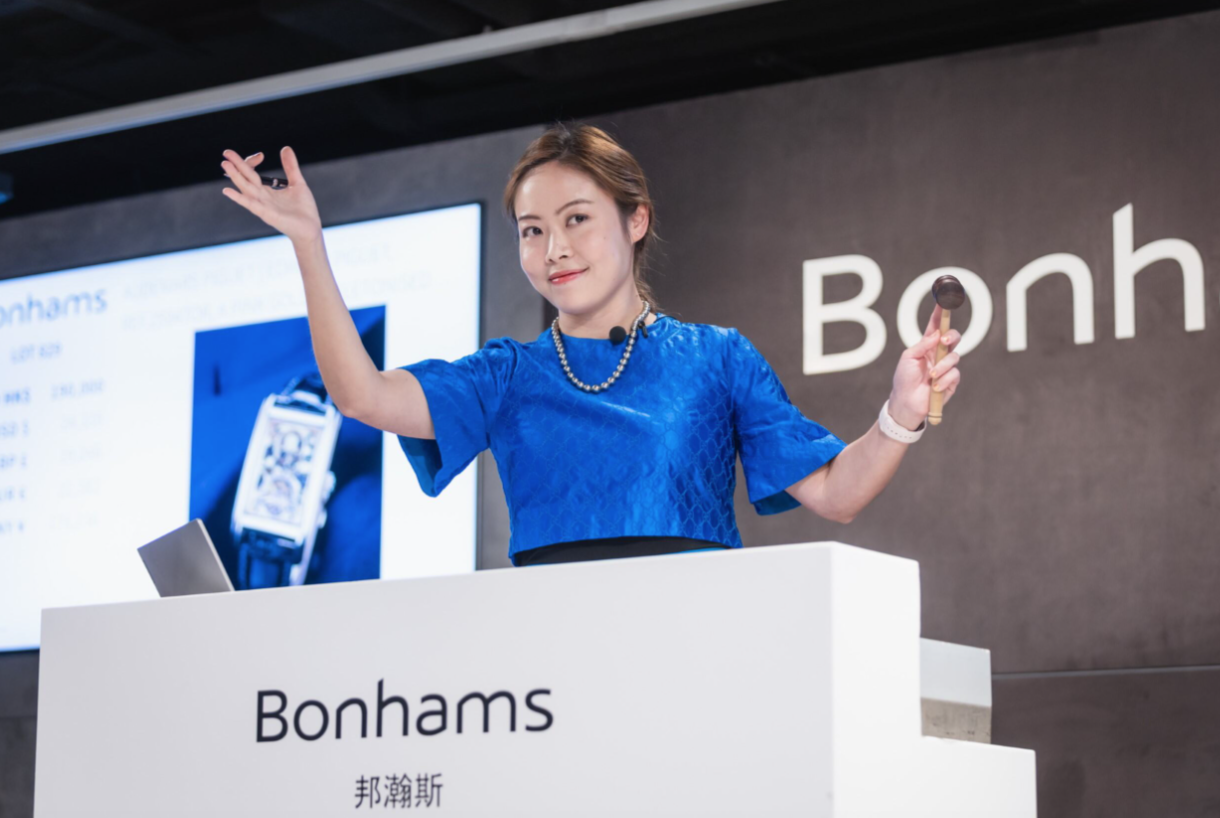
After conducting one last online auction from its offices at One Pacific Place in late September, Bonhams is expected to move into its new Asia headquarters at Six Pacific Place later this month and start its Autumn auction season the next. Spanning three floors with a total of 19,000 square feet, the new space is equipped with galleries (with much higher ceilings) and a permanent saleroom, and more importantly, more meeting rooms and an integrated office for the entire Bonhams team (versus the current situation in which the team is split into two offices).
The person who has initiated these expansion efforts is Julia Hu, who joined Bonhams around two and a half years ago as Asia managing director after spending close to a decade at the China and Southeast Asia departments at Christie’s. Since her arrival, the Bonhams Asia team has grown by about 20% – including the addition of several experienced specialists and regional heads – in a sign that the auction house is on track to fulfilling its potential, given the right conditions. “When I saw the sales results, I knew we needed more talent, and that in turn the quality of the auctions and sales would improve,” Hu says. “But we were limited by the gallery space, which didn’t allow more than 200 lots. We simply had to have a bigger space.”
When Hu first joined the Bonhams Asia team, she felt that the company had always been very strong globally but rather ineffective when it came to communications and client relations across the region. “If we’re to be a scalable business, we need key supporting functional and operational heads in Hong Kong. We have to enhance our foundation, then build out by having experts in the market to uphold each pillar or even each city. The people we’ve recruited these past two years have been in the industry for over 10 or 20 years, so I think they know the clients well. But I’ve also recruited some younger talent who are really trying to target the younger collectors.”
These new hires came onboard during a turbulent time with the Hong Kong and Asia markets, indeed the entire global economy, recovering from the pandemic on top of other major blows. Hu is rightfully proud of what the team has accomplished. “Last year we achieved HK$670 million in sales. It’s an increase from when I first joined the company; and so far this year our sales have already increased 33% from the same period the year before. You can tell the trend is still going up,” she says. “I have to say that 33% is a good number but I’d rather see solid growth each season instead of pushing the team to achieve 33% every year.
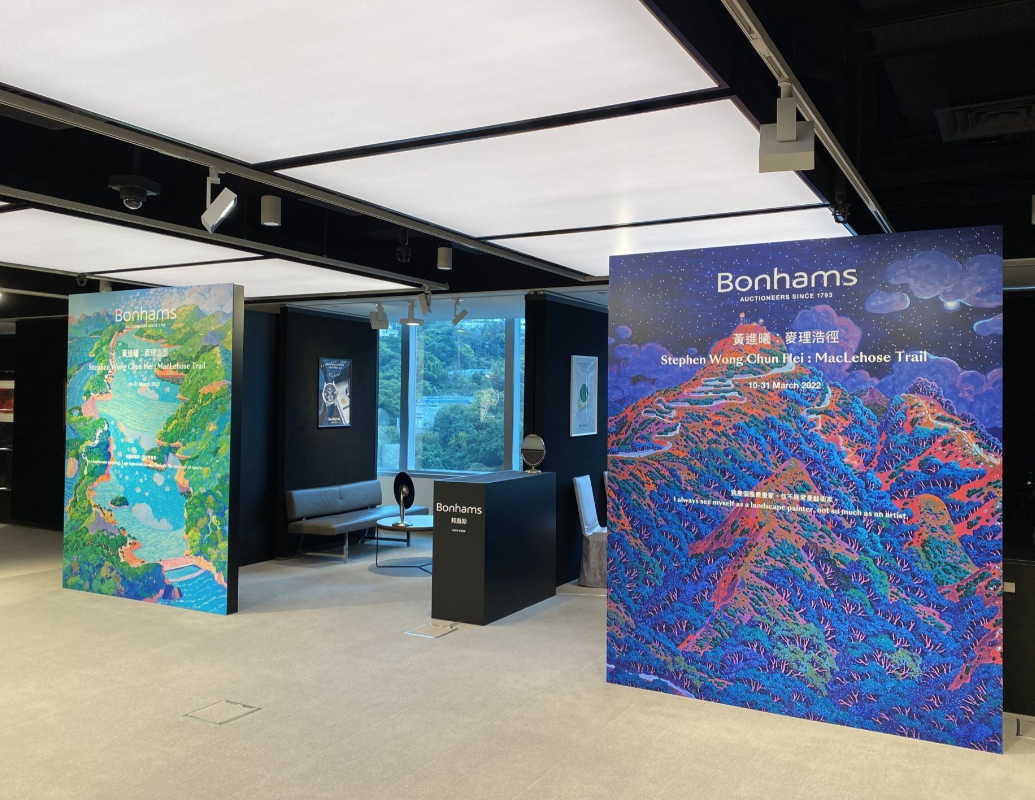
“The market has become more rational compared with before COVID. I think the pandemic might have helped people to slow down a bit, to let us try to understand more about the art of art collecting, rather than the art as an investment. And one piece of advice, don’t get involved in art speculation. Human beings like to make quick money, right? However, this is something very harmful.”
Twenty years ago, Hu could probably never have imagined herself in the auction industry. But the former programmer at IBM wasn’t content to sit in front of a computer all day, instead deciding to embrace her adventurous spirit and pursue experiences in Southeast Asian art, client relations and, eventually, management.
“When I first joined Bonhams, what I appreciated most is how everyone here is very hard-working,” she says. “Bonhams, globally and locally, has a unique positioning in that we don’t consider ourselves a very high-end auction house. Most of our lots are under US$1 million. With this price range, we’re very approachable – not just to our clients but also to our employees. We have an open-minded company culture and Bonhams is a place where creativity is encouraged. We allow employees to launch pilot programmes – for example the shows promoting local artists in Hong Kong during COVID were huge successes, one of them being Stephen Wong Chun Hei’s solo selling exhibition by Marcello Kwan, head of Modern and Contemporary Art, Asia. When my staff come to me worrying about failing, I urge them not to because we’re exactly the right size to be able to make some mistakes. As long as they’re not silly mistakes, we’re fine.”
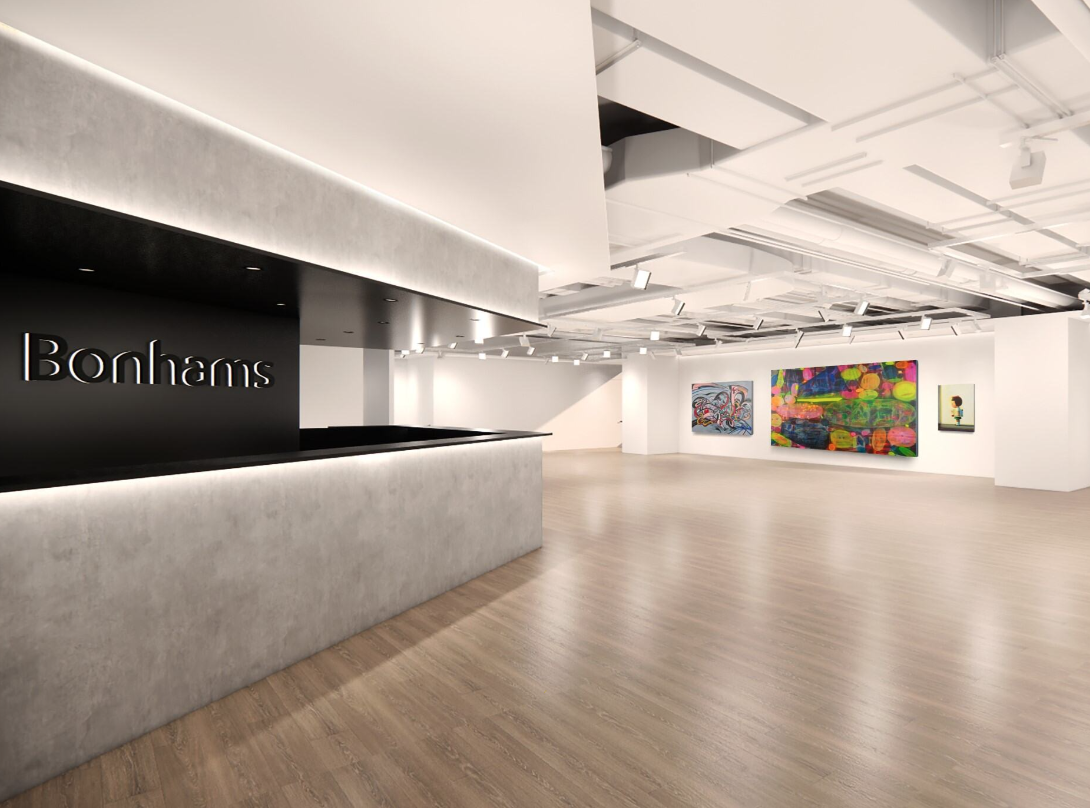
As for the 33% sales increase, Hu believes it’s mainly due to new clients being brought in by the house’s latest hires. “I think for existing clients, they’re very steady. What really drives the growth is the lots with our new talent,” she explains. “We’ve gotten more high-quality lots that are fresh to the market.” However, Hu admits it will take some time for the new talent to mature
and be able to sustain such healthy growth.
“For new collectors, they start from nothing and we have to hold their hands and give them very trustworthy advice on where they should start based on their interest. So that’s why in the new venue, we’re also trying to do some exhibition and education programmes by inviting clients to come in and give lectures. It will enable more educational two-way communication.”
Expanding a team is indeed a huge investment for Bonhams, much like the rather risky move to invest in art during such a quiet economic environment; yet, Hu thinks otherwise. “Fundamentally it’s more about whether your mindset is realistic. Some people might even say that it’s a good buying time, we just never know,” she says. “But one thing is for sure – art is not a commodity. If you really like the piece, you have to do your homework. To this day, I’m reinforcing my knowledge by reading Warren Buffett, and the art market is very similar to the stock market. Especially for contemporary artists, you need to take into consideration their personalities, their thoughts, where they want to go next and so on. Since the market is slowing down, this is a perfect time to study and not feel we need to rush like we did before.”
Moving forward, it’s Hu’s responsibility to build an ever stronger team. “I want to build Bonhams as an approachable auction house for all collectors. Showing our diversity in art lots and prices is important too, especially for new collectors who don’t want to be intimidated. More involvement in charitable events and in promoting the local culture and ecosystem would be my target as well,” she notes. As Bonhams moves into its new, modern office, it’s only natural that its team members become more modern and forward-thinking too.
Phillips
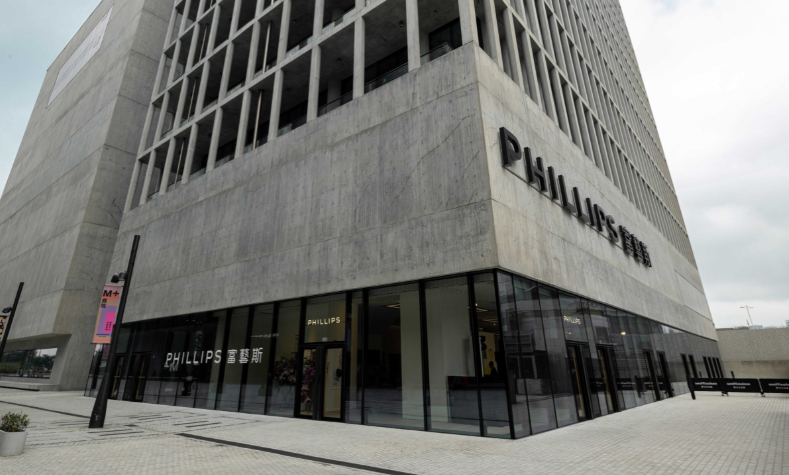
Change is afoot at Phillips’ Asia headquarters in Hong Kong. Jonathan Crockett has stepped up as chairman, Asia, passing the baton of head of 20th Century and Contemporary Art, Asia to Meiling Lee, formerly based in Taiwan. This reshuffling, along with new appointments, signals a fresh direction for Phillips.
While being separated by a harbour from Hong Kong’s “art centre”, the 1.5- year-old Phillips Asia headquarters in the West Kowloon Cultural District occupies a unique position both geographically and in the market. Its debut was followed by the opening of Phillips Perpetual in the Pedder Building last October, making it the first auction house to launch a retail venture dedicated to fine watches in Hong Kong. These permanent spaces not only facilitate more exhibitions and events but also attract brand collaborations and venue rentals. A standout partnership was with ART021 this summer, marking the first time an art fair was held at an auction house in Hong Kong. Luxury brands like Fendi, Tiffany & Co. and Dior have also enlisted Phillips’ spaces for private and VIP events.
More collaborations may in turn create more exposure for the auction house, which has managed to deliver good results despite the current conservative art market conditions. The team reports that 50% of their buyers in 2023 were new to Phillips, indicating continued growth. Not only that, but Phillips’ influence extends beyond Hong Kong, with successful exhibitions in Seoul during Seoul Art Week for three consecutive years.
Also see: Artists Li Shurui and Shi Zhiying bring nature, light and colour to joint exhibition
Lee, who is also a senior director at Phillips, believes that success isn’t always tangible, especially when considering art investment versus art appreciation. She sees the current market slowdown as an opportunity for deeper engagement with art. “Although we cannot compare the educational works done by us with those achieved by museums and institutions or galleries, now that we have our space, we have more flexibility and platforms (such
as the digital platform Dropshop that offers limited-edition pieces by contemporary artists and brands) to collaborate with artists,” she says.
“For example, our selling exhibitions that were crossover collaborations with other artists or departments are a path to the future for us and for the artists, especially the younger ones. Take the current New Now exhibition featuring Huang Yuxing as an example – when the market is hot, buyers might only pay attention to Huang’s works from a particular style or series, without taking the time to study and draw a complete picture of who he is, what he does, his history and more.”
Of course the art market during and immediately after COVID was exciting, with records broken from 2022 to early 2023. However, Lee genuinely appreciates the current slower market. She likens it to Darwin’s “survival of the fittest” theory, saying, “There used to be a time where investors didn’t need to even think. Whatever they saw or heard about, they bought. Now that the market is relatively quiet, those people and art pieces that get to stay are ‘true love’. This period can be seen as a reset to the market and for us. We get to pace ourselves mindfully and advise our collectors meticulously, while collectors can take the time to do their homework.”
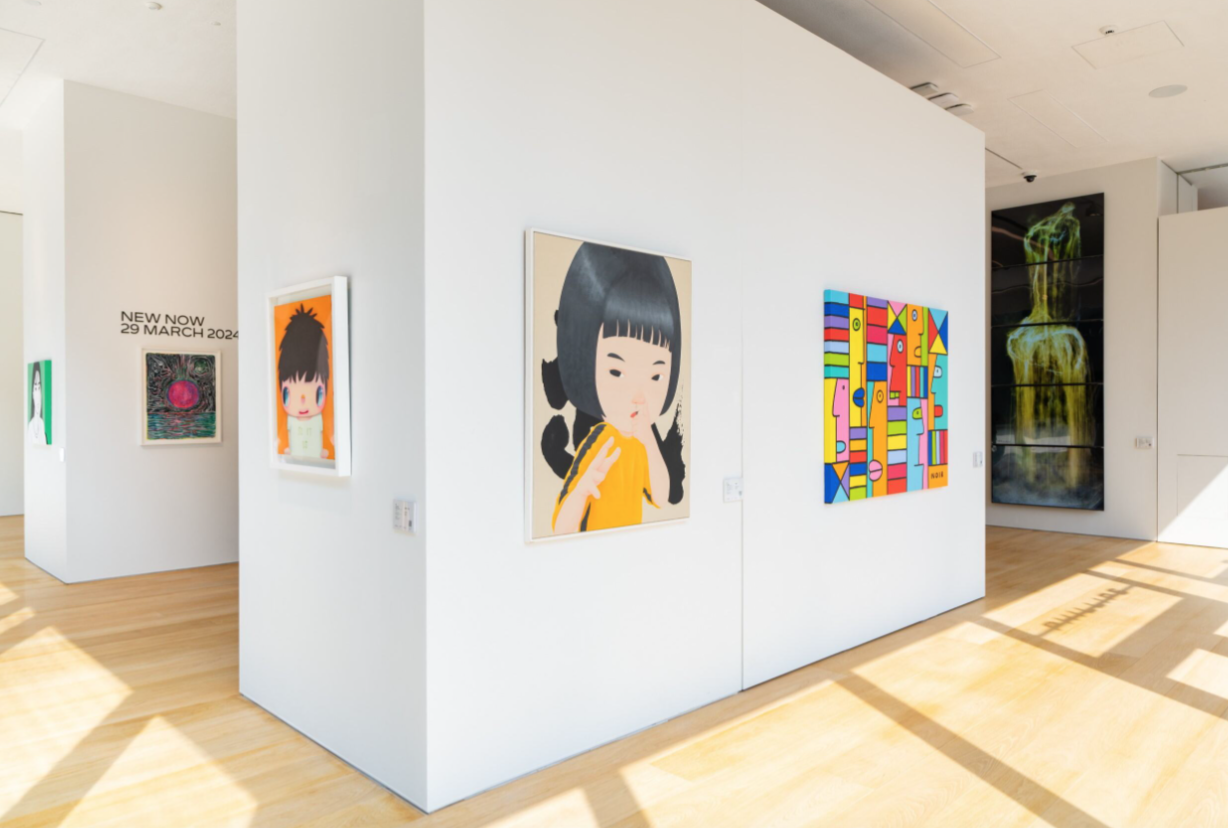
With over 30 years of experience in the art industry, Lee has witnessed a series of ups and downs. And she still feels positive about the art economy. “The rise and fall in the economy is yet another cycle,” she says. “It doesn’t matter what we went through all these years, the art ‘market’ definitely still exists.”
Despite being a relative newcomer to the Asia art market (Phillips held its first Hong Kong auction in December 2015) compared to other major auction houses, Phillips distinguishes itself through “localisation”. “It’s our ability to bring in more Asian voices into the Asia art scene, while making a stance in the international market. We need to make auction fun, and we can’t do that by following the footsteps of other houses,” Lee says. “If we always follow and bring along something similar to whatever they’re selling, the market will only become smaller and narrower. And the quicker something gets hot, the harder it falls. Instead of market price, we need to look at the artists’ hearts.”
Hong Kong is also a late bloomer in the collectors market compared to Taiwan. With experiences in both places, Lee is able to harness their different strengths to the benefit of Phillips as well as collectors. “Taiwanese collectors enjoyed an early start in their journey, so they’re comparatively more mature,” she explains. “And yet, Hong Kong collectors are more diverse with a more international perspective, and are growing at an exponential rate.
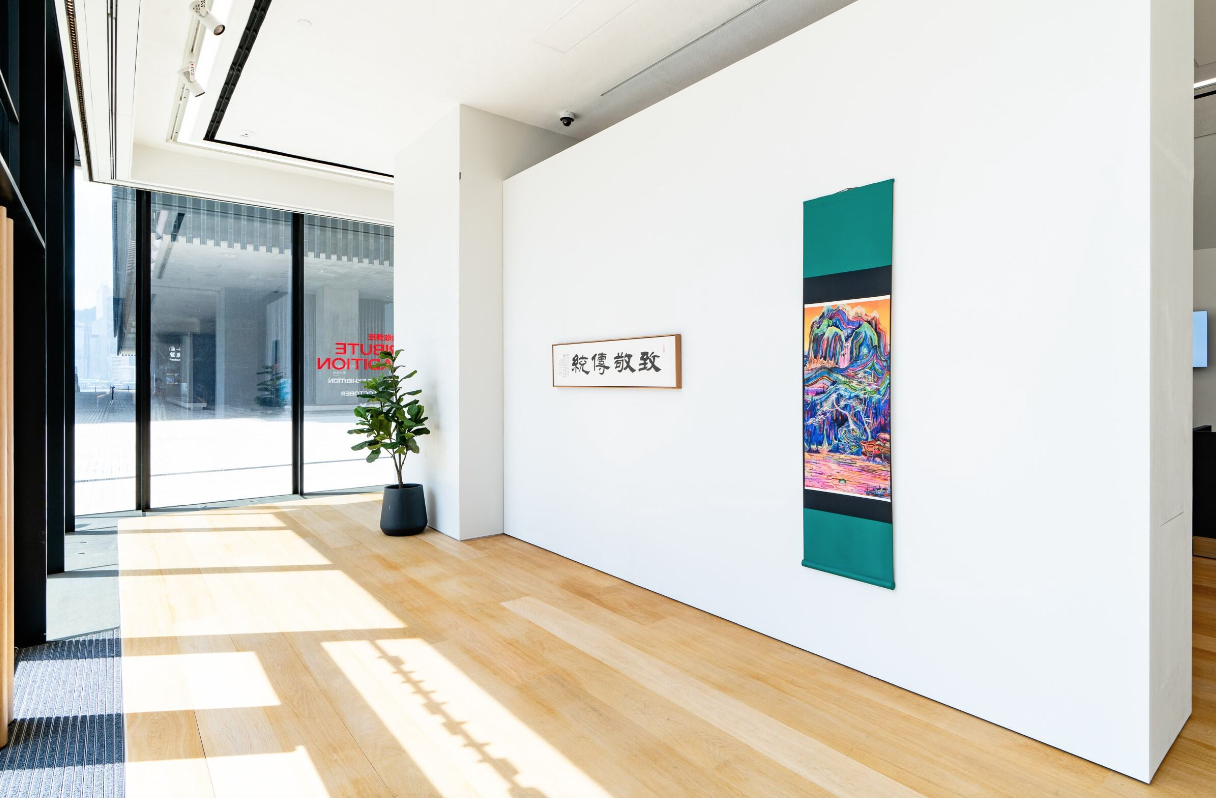
In what used to be known as a ‘cultural desert’, art becoming more and more popular is proof that society is advancing. When I first began in the art industry, those who collected art were mainly people from three professions: doctors, accountants and lawyers – who were deemed the elites in Taiwanese society. However, gradually there were more entrepreneurs coming in, not just big business owners but also those of smaller ventures. Art has become something more common, and collectors are more willing to support younger artists as well.” When it comes to nurturing new collectors, Lee wants them to keep in mind “what makes art, art” – that the art of collecting is somewhat philosophical. “There are many aspects to art, and what differentiates art from financial or investment tools is that it has a spiritual and aesthetic aspect. Before learning to trade art, one should first learn to appreciate it. Then
one can learn about what era or style they truly wish to focus on.”
And not just new collectors – Lee reckons that market veterans should consider the
changing mentality of the art market. “Art is more than a commodity. For us who are in the industry, the more we realise the rise and fall of a cycle, the more sustainable the growth is,” she says. “It takes time to groom an artist or a genre. We need to make sure our collectors stay with us and stay interested in the market, rather than snatching up new pieces by a hot new artist then flipping them right away. If we wish to maintain a steady pace, we need to find a way to make it sustainable.”
Much like in chess, it’s easier to plan strategic moves in silence. “It’s time for us to look inwards. With a bigger company now, how do we ensure the entire department upholds the core value of Phillips? Growing from that mindset, now with a beautiful headquarters, how do we make the best use of it and what should we really do with the space? And other than our jobs, what steps can we do further? I think this is the perfect time to plan our next steps.”
Also see: What's new at Hong Kong's major auction houses (part 1)





























